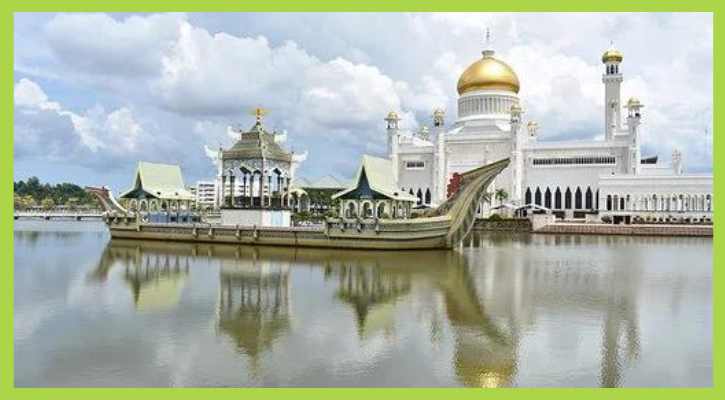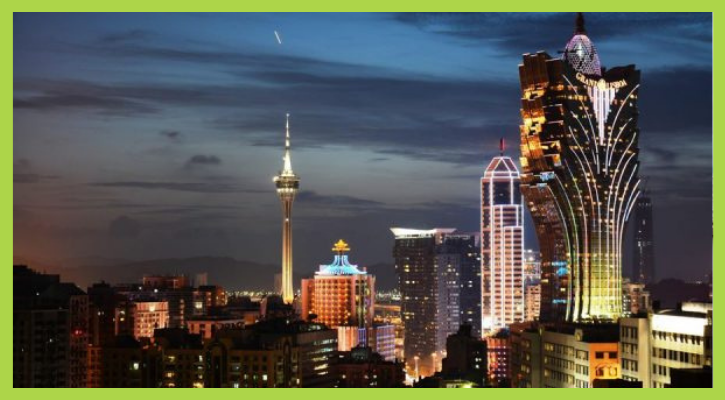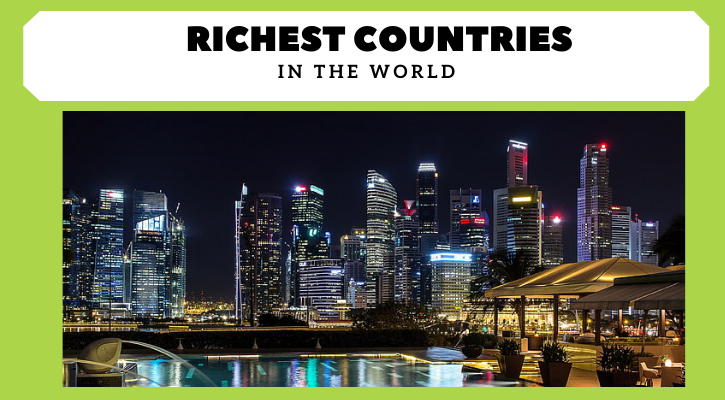The world’s balance of power has shifted many times since the birth of the Industrial Revolution. The first Industrial Revolution lasted from the mid-18th century to about 1830 and was mostly confined to Britain. The second Industrial Revolution lasted from the mid-19th century until the early 20th century and took place in Britain, continental Europe, North America, and Japan. This allowed them to become wealthier than most other countries. As technology advanced, more and more countries were able to industrialize and gain wealth.
The wealth of countries is rapidly increasing and decreasing. Therefore this list of the top 10 richest countries in the world in 2022 may have a few changes in 2023.
How Do We Define A Rich Country?
Common questions asked are, “Which is the richest country in the world?”, or, “Is China richer than the USA”. However, this list will answer the question of “Which is the richest country in the world per capita?” Some would be surprised to find out that many of the wealthiest nations are also amongst the smallest.
Luxembourg, Singapore, and Hong Kong, for example, benefit from sophisticated financial sectors and tax regimes that help attract foreign investments and professional talent. Others, such as Qatar and Brunei, have significant reserves of hydrocarbons or other valuable natural resources. Casinos and large volumes of tourists are also good for business. Macau, Asia’s gambling haven, is one of the world’s wealthiest states.
But what do we mean when we say “richest country in the world”. Gross domestic product (GDP) measures the value of all goods and services produced in a nation. However, a better method to determine how rich or poor one country’s population is relative to another is to divide this output by the number of full-time residents. Therefore, why “rich” sometimes equals “small” then becomes clear. These countries’ economies are disproportionately large compared to their small populations.
Only when taking into account inflation rates and the cost of local goods and services can we get a more accurate picture of a nation’s average standard of living. The resulting figure is what is called purchasing power parity (PPP). Which is often expressed in dollars to allow comparisons between different countries.
Should we assume that in countries where this figure is particularly high, the overall population is better off than in the majority of the rest of the world? No, not quite. We are dealing with averages, and structural inequality in any given country can tip the scales in favor of the already privileged.
The Effects of COVID-19
The COVID-19 pandemic revealed these disparities in ways that few could have predicted. While there is no doubt that the wealthiest countries had the resources to better care for those in need, not everyone had equal access to them. These countries are often more vulnerable to the coronavirus due to their older populations and other risk factors. Furthermore, the economic downturn disproportionately impacted low-wage workers rather than those in high-wage occupations.
A new kind of inequality emerged too. Some people have been able to work from home, some others lost their livelihood and found themselves without much of a safety net. Large holes in the most celebrated welfare systems in the world were exposed.
When a crisis of such unprecedented magnitude takes place, you’d rather be where welfare and social services can offer a degree of assistance and hospitals have reliable electricity access. In the 10 world’s poorest countries, the average per-capita purchasing power is roughly $1,200. In the 10 richest countries in the world in 2022, it is over $87,000.
Tax Havens
However, there is one more reason to be skeptical of such economic prosperity. Many of the countries in our ranking, for example, are tax havens. This that wealth generated in other countries ends up inflating their GDP. More broadly, it is estimated that more than 15% of global jurisdictions are tax havens and that approximately 40% of global FDI flows are so-called “phantom” transactions. Financial investments that pass through empty corporate shells with no real impact on a country’s economy or people’s financial well-being. When you consider the unequal distribution of resources, it’s easy to see why even in very rich countries you find very poor people.
The Top 10 Richest Countries In The World In 2022
10. Brunei Darussalam

- Population: 438,788
- GDP per capita (PPP): $64,724.1
Brunei gained independence from Britain in 1984. The small country of Brunei, situated in South Asia, quickly grew to become one of the richest countries in the world. Its Sultan regulates everything from the military to the economy, imposing unique punishing rules and providing free education and medical care for its citizens. Brunei has an over 97% literacy rate.
Hassanal Bolkiah, the Sultan of Brunei, lives in a palace with 1,788 rooms, including 257 bathrooms, a banquet hall that can accommodate up to 5,000 guests, a mosque for 1,500 people, an air-conditioned stable for 200 polo ponies, 5 pools, and 18 elevators. His $28billion fortune is derived from the immense reserves of oil and natural gas of the country.
Distribution of Wealth
Brunei is known as the second happiest nation on the continent behind Singapore. This may be surprising, seeing as the country’s wealth is not equally distributed, with much of the population living in poverty. Despite the monarch’s opulence and an on-paper per-capita purchasing power of over $60,000, malnutrition in Brunei is commonplace. Although data is scarce, it has been estimated that 40% of its 450,000-strong population earn less than $1,000 a year.
Brunei’s offshore oil drilling industry has made it rich. It is well-known that there are people in Brunei who enjoy luxurious things in life, with more car ownership than in most countries in the world. Despite the strict rules on certain things like homosexuality and alcohol consumption, prostitution often goes “unnoticed”. Even the Sultan has had numerous scandalous features written about him for being a “sex-obsessed monarch.”
The Effect of COVID-19
Luckily, the country was spared the worst of the COVID-19 pandemic with only a few hundred recorded cases. What it was not spared from was the pandemic-related plunge in oil prices. After registering a 13-year high of 3.9% economic growth in 2019, the GDP fell in 2020 to 1.2%. Then again, as oil prices started bouncing back in 2021, so did Brunei’s economy. Nevertheless, while the US’s public debt in 2018 was 106% of its GDP, it was only 2.4% in Brunei.
9. Macau

- Population: 664,344
- GDP per capita (PPP): $67,475
As recently as a few years ago, many were betting that the Las Vegas of Asia was on its way to becoming the richest nation in the world. Covid struck, global traveling came to a halt and Macau briefly slipped out of the IMF’s top 10 rankings. Macau is also the only country on the list whose per-capita purchasing power is lower than it was before the start of the pandemic.
Yet, while things are not what they used to be, with tourists from mainland China, Hong Kong, and Taiwan now allowed into the island hotel bookings are on the rise.
Casinos, Casinos, Casinos
Since the gaming industry was liberalized in 2001 this special administrative region of the People’s Republic of China has seen its wealth growing at an astounding pace. With a population of just over 600,000, and more than 40 casinos spread over a territory of about 30 square kilometers, this narrow peninsula just south of Hong Kong remains a money-making machine.
